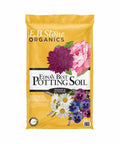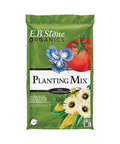Details
Safari Sunset Conebush is a multi-stemmed evergreen shrub with an upright spreading habit of growth. Its relatively fine texture sets it apart from other landscape plants with less refined foliage.
This is a relatively low maintenance shrub, and should only be pruned after flowering to avoid removing any of the current season's flowers. Deer don't particularly care for this plant and will usually leave it alone in favor of tastier treats. It has no significant negative characteristics.
Safari Sunset Conebush is recommended for the following landscape applications:
- Mass Planting
- Hedges/Screening
- General Garden Use
- Container Planting
Features
Safari Sunset Conebush features showy creamy white daisy flowers with red overtones, yellow eyes and red tips at the ends of the branches in early spring. The flowers are excellent for cutting. It has attractive grayish green foliage edged in red. The oval leaves are highly ornamental and turn an outstanding red in the fall. The fruit is not ornamentally significant.
Care
Planting & Growing
Safari Sunset Conebush will grow to be about 10 feet tall at maturity, with a spread of 8 feet. It tends to fill out right to the ground and therefore doesn't necessarily require facer plants in front, and is suitable for planting under power lines. It grows at a medium rate, and under ideal conditions can be expected to live for approximately 30 years.
This shrub should only be grown in full sunlight. It prefers dry to average moisture levels with very well-drained soil, and will often die in standing water. It is considered to be drought-tolerant, and thus makes an ideal choice for xeriscaping or the moisture-conserving landscape. It is particular about its soil conditions, with a strong preference for poor, alkaline soils. It is somewhat tolerant of urban pollution. This particular variety is an interspecific hybrid.
Safari Sunset Conebush makes a fine choice for the outdoor landscape, but it is also well-suited for use in outdoor pots and containers. Its large size and upright habit of growth lend it for use as a solitary accent, or in a composition surrounded by smaller plants around the base and those that spill over the edges. It is even sizeable enough that it can be grown alone in a suitable container. Note that when grown in a container, it may not perform exactly as indicated on the tag - this is to be expected. Also note that when growing plants in outdoor containers and baskets, they may require more frequent waterings than they would in the yard or garden.


































